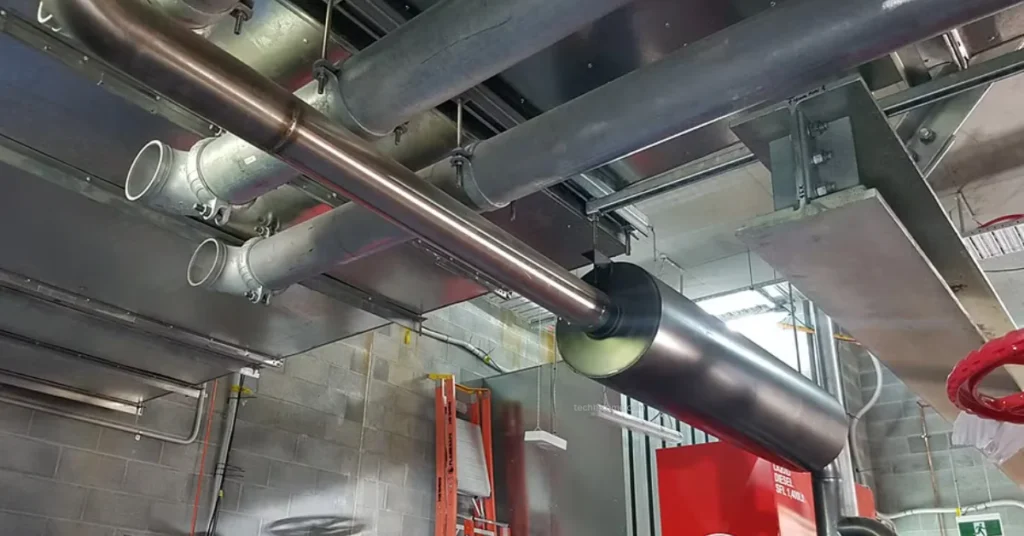Internal Control Catalyst combustion engines have a wide variety of applications, from powering cars and trucks to generators and lawnmowers. You’ll even have larger combustion engines in industries and factories. All of these engines have something in common: they produce emissions.
As an industry-leading catalyst manufacturing company, Applied Catalysts is committed to helping our customers meet the ever-changing emission regulations. We offer emission control catalysts for various applications to help with the reduction of NOx, VOCs, CO, and other harmful emissions.
What are Emissions?
Emissions from internal combustion engines are made up of various gases and particulate matter. These emissions can be harmful to both the environment and human health.
The main types of emissions from combustion engines are:
- Carbon monoxide (CO)
- Nitrogen oxides (NOx)
- Volatile organic compounds (VOCs)
- Particulate matter (PM)
In most cases, emissions result from incomplete combustion of the fuel. Such a situation occurs mostly when there’s not enough oxygen available for the fuel to burn completely.
What are Emission Control Catalysts?
Emission control catalysts are used to help reduce the harmful gases emitted from combustion engines. They work by chemical reactions that convert harmful gases into less harmful compounds.
Types of catalysts that Applied Catalysts offers
There are various types of emission control catalysts, each with its benefits and applications. Here are some of the most common types of catalysts that you can get from Applied Catalysts:
Activated carbon monolith catalysts
Commonly used in various applications such as for emission control and chemical processes, activated carbon monolith catalysts are made up of porous activated carbon materials.
These catalysts can also be used in other applications, such as ozone reduction, dehalogenation, and dehydrogenation.
Ceramic Monolith catalysts
Typically assuming a honeycomb structure, these catalysts are typically used for industrial air pollution or engine emission control. Monoliths can also be referred to as “flow-through” substrates, as they are designed to allow gas or liquid to flow through them.
Metal monolith catalysts
Metallic monolith catalysts are mostly made using FeCr alloy, which is a thin alloy metal foil. These types of catalysts have a wide range of applications, from automotive emission control to VOC abatement.
Types of catalytic converters
There are three main types of emission control catalytic converters:
- Oxidation (two-way) catalysts
- Three-way catalysts
- Diesel oxidation catalysts
Two-way (oxidation) catalytic converters
An oxidation catalytic converter is a device that helps reduce emissions of carbon monoxide (CO), hydrocarbons (HC), and particulate matter (PM) from an engine. Oxidation catalysts work by converting these pollutants into carbon dioxide (CO2), water (H2O), and nitrogen gas (N2).
These converters also use an EGR system to reduce nitrogen oxides (NOx) slightly.
Three-Way catalytic converters
A three-way catalyst is a device that helps reduce emissions of carbon monoxide (CO), hydrocarbons (HC), and nitrogen oxides (NOx) from an engine.
Three-way catalysts work by converting these pollutants into carbon dioxide (CO2), water (H2O), and nitrogen gas (N2). In a three-way catalytic converter, the NO and O2 are used as components that facilitate burning.
HC and CO, on the other hand, are the burning components. These will react to form H2O, N2, and CO2.
Diesel oxidation catalytic converters
A diesel oxidation catalyst is a device that helps reduce emissions of carbon monoxide (CO), hydrocarbons (HC), and particulate matter (PM) from a diesel engine.
Diesel oxidation catalysts work by converting these pollutants into carbon dioxide (CO2), water (H2O), and nitrogen gas (N2).
There you go,
A brief guide to emission control catalysts!
Depending on your needs, you can choose from a wide range of catalyst components from Applied Catalysts to help in building the appropriate converter.
If you need help in deciding which components to choose, don’t hesitate to contact our expert team.
